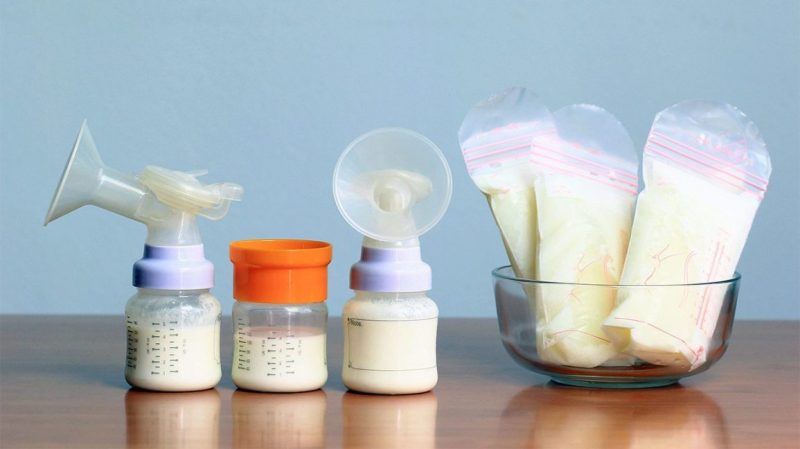Baby poop comes in all different colors and textures. Breastfed baby poop is different from formula-fed baby poop and a baby’s poop can look different from one diaper to the next. But why is my baby’s poop foamy? Is that normal?
Foamy baby poop is very common and often not a cause for concern. Your baby may have frothy poop if they are teething and in this case, it is nothing to worry about.
Nursing babies may be having foamy poops if they are getting an imbalance of foremilk and hindmilk during breastfeeds. Foamy poop can also be an indication of certain stomach viruses and if your baby is displaying other symptoms they will need to see a doctor.
What Is Foamy Baby Poop?
‘Normal’ baby poop varies in consistency and color, depending on what your baby is eating.
Breastfed baby poop is usually mustard-like in color and texture, whereas babies who are formula-fed will have poops that are more formed and can be anything from pale yellow to a brownish yellow color.
However, it is common for both breastfed and formula-fed babies to sometimes have foamy poop.
Foamy baby poop is frothy, more runny than usual, and has bubbles in it. Baby poop that is foamy is often also a different color from your baby’s usual poop. Foamy baby poop can be any color from yellow to green, the color will depend on the cause and your baby’s diet.
Is Foamy Baby Poop Normal?
It is very common for babies to have foamy poops from time to time. If you find a frothy poop in your baby’s diaper, it is not a cause for immediate concern. Breastfed babies are more prone to frothy poop than formula-fed babies.
This is because a breastfed baby’s poop is runnier and therefore bubbles can form more easily. Also, breastfed babies can have foamy poop if they are not getting enough hindmilk.
Can Foamy Poop Be a Sign That My Baby is Sick?
If your baby does not normally have foamy poop and you start to notice it at diaper changes, you will need to keep an eye out for other symptoms as it may be a sign of sickness or infection.
Foamy poop may mean your baby has an infection called Giardia or bacterial gastroenteritis,
Stomach infections can be painful and cause a lot of discomforts and unpleasant symptoms for your baby. If your baby has frothy poop and any of the following symptoms, they may have an infection and you will need to visit the pediatrician:
- Gas
- Nausea
- Stomach cramps (gets upset when their stomach is pressed)
- Fatigue
- Unexplained weight loss
View in gallery
As well as Giardia and bacterial gastroenteritis, foamy poop can also be a sign of other illnesses and viruses, including:
- Chronic diarrhea – If your child has had regular diarrhea for more than 2 days, they will need medical attention. Diarrhea can quickly cause dehydration in babies and if not treated can also lead to malnutrition.
- Stomach virus – Any stomach virus can potentially cause frothy poops as they often result in diarrhea, which can have a foamy texture.
- Rotavirus – Babies can be immunized against rotavirus and they should receive their first immunization before 15 weeks of age. Rotavirus can cause severe diarrhea but frothy poop can also be a side effect of the vaccine.
What Causes Foamy Poop In Breastfed Babies?
Foamy poop is more common in breastfed babies as it can occur when there is an imbalance between the amount of foremilk and hindmilk that your child is consuming.
If your baby is not getting enough hindmilk, the calorie-rich milk that comes during the later stages of a feed, they will be hungry more often and are also likely to have foamy green bowel movements.
Nursing moms with an oversupply of breastmilk may unintentionally be feeding their baby too much foremilk and not enough of the fat-dense hindmilk that they need to feel full.
A foremilk/hindmilk imbalance can also occur if a nursing mom offers the second breast too soon before their baby has got to the hindmilk.
For the ultimate guide to breastfeeding check out our guide here.
What Is The Difference Between Foremilk And Hindmilk?
When you bottle-feed your baby formula milk, the milk is exactly the same throughout the whole feed.
At each stage of the feed – beginning, middle, and end – your baby is drinking milk with the same calories, vitamins, and minerals present. However, the same can’t be said when it comes to breastfeeding.
Breastmilk consists of foremilk and hindmilk and each milk has a different composition and provides different nutrition for your baby.
So, what’s the difference between foremilk and hindmilk? Let us explain:
Foremilk is the milk that comes out at the start of a feed. It is watery and thin in texture and sometimes has a bluish tint. Foremilk can look almost translucent, is high in lactose but low in calories.
Hindmilk is the milk that comes during the later stages of a feed, once your baby has drunk all of the foremilk.
Hindmilk is thick and more creamy in texture, it more closely resembles cow’s milk than foremilk does. Hindmilk has a high-fat content and is rich in calories.
Signs Of A Foremilk/Hindmilk Imbalance
View in gallery
Babies who are not getting enough hindmilk can have foamy poops that are a greenish color. If your nursing baby is having poops that are frothier than usual, you may need to adjust how you feed them to ensure they are getting all the calories they need.
Here are some signs to look out for if you think your baby isn’t getting enough hindmilk –
- Gas
- Green frothy poop
- Crying after nursing
- Irritable after and between feeds
- Wants to be fed regularly
How To Help Baby Get Enough Hindmilk
If you think your baby is having foamy poop because they are not getting enough hindmilk, there are steps you can take to resolve the problem. Your aim is to feed your baby a healthy balance of foremilk and hindmilk, you may need to adjust the way you nurse in order to achieve this.
Here are some tips on how to solve the foremilk/hindmilk problem:
Pump some foremilk
Before you latch your baby on, try pumping or hand expressing some of your foremilk. An oversupply is usually accompanied by a fast letdown, pumping before a feed will help to eliminate both of these problems.
If you remove some foremilk before nursing your baby, it will not take them as long to reach the fatty hindmilk. Pumping a small amount before a feed also helps to relieve engorgement and makes latching your baby on much easier as your breasts will be softer.
Don’t time feeds
It can be tempting to allow your baby a specific amount of time on one breast before switching them over to the other.
However, by only giving your baby a certain amount of time per breast, you may be preventing your baby from having enough time to consume all the hindmilk they need.
Let your baby feed for as long as they want and try to keep them on the same breast for as long as you can.
Feed from one breast per feed
The best way to ensure your baby is getting enough hindmilk is to avoid swapping breasts regularly throughout a nursing session. Try to just use one breast per feed, only offering the second breast once the first is completely drained.
By keeping your baby on one breast, they are going to be reaching the hindmilk and not just drinking the foremilk from each side.
Allow your baby to feed on the one breast for as long as they want to, only offer the offer side if they become fussy and your breast feels completely drained.
Can Dairy Sensitivity Cause Frothy Poop In Breastfed Baby?
View in gallery
A foremilk and hindmilk imbalance may be the most common reason for breastfed babies to have foamy poop, but it is not the only cause. Sensitivity to certain foods or dairy can also result in foamy poop.
If you are nursing and your baby has a food allergy or has a dairy sensitivity, you will need to change your diet while you continue breastfeeding.
Foamy poop is one of the many symptoms of a food allergy or a milk protein allergy. Here are some other signs to look out for:
- Vomiting
- Reflux
- Weight loss
- Pain
- Diarrhea (including foamy and frothy loose stools)
- Rash
- Blood in poop
If you notice any of these symptoms, you do not need to stop breastfeeding immediately. However, you will need to keep a food journal to help you to determine what food is responsible for causing your baby to have these symptoms.
If you notice a pattern and certain foods are triggering your baby’s symptoms, try cutting these foods from your diet and see if the problem improves.
A doctor will be able to perform tests to discover whether your child has any food allergies.
In most cases, babies will grow out of their food sensitivities and you will not have to restrict their diet forever. However, for some children allergies are permanent but can be managed with a controlled diet.
Does Teething Cause Foamy Baby Poop?
Teething can be the culprit when it comes to foamy poop in both breastfed and formula-fed babies. It is common for teething babies to have foamy poop as they dribble more than usual and swallowing excess drool which results in frothy and bubbly poops.
If you are not sure if your baby’s foamy poop is down to teething, check to see if your baby has any of the other teething symptoms:
- Crying
- Irritability
- Low-grade fever
- Red cheeks
- Drooling more than usual
- Chewing on hands/toys/everything!
- Diarrhea (including foamy poop)
When accompanied by the above symptoms, it is likely your baby is having foamy poop because they are teething. Teething can be painful for babies and exhausting for parents but there are several remedies you can try at home to ease their discomfort.
Change position during feeds
View in gallery
If you are nursing your teething baby and they are fussy or seem in pain, try swapping positions. Moving your baby so your nipple sits differently in their mouth may help to relieve pressure on the sore area of their gums.
Give them something cold to chew
Give your baby a frozen teething toy or a damp washcloth that has been slightly frozen. The cold temperature will help to ease any pain and may numb your baby’s mouth slightly. making them comfortable enough to feed for longer.
Give their gums a massage
There are baby massage techniques that specifically target the gums and relieve teething pain. If your baby is cutting a new tooth, try massaging their gums and jaw to ease their pain.
Give them pain relief
Avoid using numbing teething remedies as these can make it difficult for your baby to effectively nurse. Instead, give your baby Tylenol approximately half an hour before a feed.
If your baby is having foamy poop due to teething, you should notice their stools returning back to normal once the tooth has cut through and your baby is not swallowing as much drool and excess saliva.
What Causes Foamy Poop In Formula Fed Babies?
Formula-fed babies can occasionally have frothy poop in their diaper too. If your baby is drinking formula milk, their poop may be foamy for some of the reasons listed above – teething, diarrhea, dairy sensitivity, or a stomach virus.
Unlike breastfed babies, the poops of formula-fed babies are not influenced by moms’ diets. However, formula-fed babies can have a sensitivity to dairy – cows milk protein – or they may be lactose intolerant.
If your baby is showing signs of lactose intolerance or a dairy allergy, you will need to take them to a doctor to have the correct diagnostic screenings performed.
Once your baby is confirmed as having a CMP allergy or lactose intolerant, your pediatrician will be able to advise what formula you need to feed them and how to manage to wean safely.
However, while you wait for a doctor’s appointment you can try switching your baby to dairy-free formula milk.
Many formula companies also produce dairy-free alternatives. If you are worried about a dairy allergy or lactose intolerance, you can try giving your baby a formula made from soy or goat’s milk.
Does IBS Cause Foamy Poop In Babies?
View in gallery
Whilst in most cases foamy baby poop is nothing to be overly concerned about, frothy stools can be a sign of IBS. Foamy poop on its own is not enough of a reason to assume your baby has irritable bowel syndrome.
However, when combined with the following symptoms you may need to take your baby to be checked by a pediatrician:
- Diarrhea includes foamy poop
- Constipation
- Feeling more of an urge to go
- Passing mucus
- Abdominal bloating
If you are concerned about IBS contact your baby’s doctor. IBS is not a condition that will just go away and if your baby continues to have frothy poop and the above symptoms, book a doctor’s appointment sooner rather than later.
Rare Causes of Frothy Baby Poop
Foamy baby poop is common and, when the only symptom, is rarely linked to anything serious. However, there are other potential causes for foamy baby poop.
It is important to remember that the following are much less likely to be causing your baby’s poop than the reasons outlined. Here is a list of less common causes of frothy baby poop:
- Brain-gut signal problems
- GI motor issues
- Hypersensitivity
- Mental health issues
- Bacterial infection
- Genetics
- Abdominal surgery
What Do I Do If Baby Has Foamy Poop?
It can be alarming when you notice foamy poop in your baby’s nappy but there are several things you can do to try and help.
Firstly, you need to determine the cause of the frothy poop. You can only begin to get your baby pooping like normal if you know what is causing their stools to be bubbly and frothy.
To recap, here is a list of the main reasons your baby may be having foamy poop:
Teething
There is not much you can do. Just try to ease their gum pain as much as possible. The poop is foamy in these instances as they are swallowing a lot of drool. Once your baby stops drooling to excess, the foamy poop should stop too.
[amalinkspro type=”showcase” asin=”B093B1TMTG” apilink=”https://www.amazon.com/dp/B093B1TMTG?tag=mominformedcom-20&linkCode=osi&th=1&psc=1″ new-window=”true” addtocart=”false” nofollow=”true” sc-id=”5″ img-sizes=”500:500″ imgs=”https://m.media-amazon.com/images/I/4151xrlMZ9S._SL500_.jpg” link-imgs=”false” btn-color=”#ff9900″ btn-text=”Check Price” alignment=”aligncenter” hide-prime=”0″ hide-image=”0″ hide-price=”0″ hide-button=”0″ width=”550″]Tronphy Baby Teething Tubes[/amalinkspro]
Foremilk/hindmilk imbalance
If your baby drinks too much foremilk and not enough hindmilk, this can result in greenish foamy poop. Follow the steps highlighted earlier in this article to help resolve a foremilk/hindmilk imbalance.
Allergies and intolerances
A food allergy, dairy allergy, or lactose intolerance can all cause your baby to have frothy poop.
If you think this is the case, try removing the specific food or allergen from your baby’s diet and see if things improve. Remember it is always best to get an allergy confirmed by a medical professional.
FAQs
Why Does My Baby Have Foamy Poop?
Whilst foamy poop can be a sign of sickness, more often than not the frothy texture of your baby’s poop is down to something in their diet. Remember the problem can often be resolved by making changes to your baby’s diet with the help of a pediatrician.
What does the foamy poop look like?
Normal stool is usually more solid and brown in color although as we have said there can be many variations. Foamy or frothy poop is typically diarrhea-like and may appear to have bubbles in it. It can also seem oily or contain mucus.
What does the baby poop look like with milk allergy?
The Baby’s poop may be loose and watery. It could also appear bulky and frothy and can even be acidic. This means that you may notice a diaper rash as your baby’s delicate skin becomes irritated.
The Final Thought
A diaper full of foamy baby poop can be alarming for parents but is rarely a reason to panic. There are many common and easy to resolve causes of frothy baby poop, the most likely being a foremilk/hindmilk imbalance in breastfeeding babies.
However, if your baby is displaying other worrying symptoms as well as having foamy poop, it is a good idea to contact your doctor.
Although it may not be as likely, frothy baby poop might be a symptom of a stomach virus, bacterial infection, or other medical condition that will require a trip with your baby to see the pediatrician.






